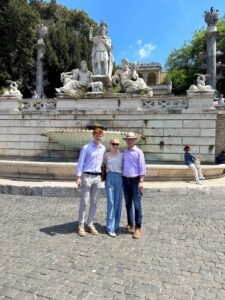 Your Survival Guy, on the heels of a three-week trip to Rome and Paris, can tell you the core of both cities are alive and well. I like the future survivability of American cities where they’re places for people to live and connect not just vacant canyons of office buildings. From The WSJ:
Your Survival Guy, on the heels of a three-week trip to Rome and Paris, can tell you the core of both cities are alive and well. I like the future survivability of American cities where they’re places for people to live and connect not just vacant canyons of office buildings. From The WSJ:
While office towers sit empty and nearby businesses struggle to pay their bills, residential neighborhoods in America’s biggest cities are bustling again.
The pandemic and remote work have done little to dent the overall appeal of cities such as New York, Chicago and Los Angeles, foot-traffic and rent data show. Instead, the pandemic has shifted the urban center of gravity, moving away from often sterile office districts to neighborhoods with apartments, bars and restaurants.
“We’re now back to what cities really are—they’re not containers for working,” said Richard Florida, a specialist in city planning at the University of Toronto. “They’re places for people to live and connect with others.”
At the height of the pandemic, some analysts predicted that big cities would enter a downward spiral as remote workers sought more space and cheaper places to live. That happened to some degree early on, but it didn’t last. While big metropolitan areas lost population during the first year of the pandemic, partly because of a drop in immigration from abroad, the losses have since slowed or reversed, according to a Brookings Institution analysis of census data.
Many residential neighborhoods benefit from remote work. As people spend more time at home, they frequent local shops, gyms and restaurants, boosting the economy of places such as Brooklyn, N.Y.’s Ditmas Park and Williamsburg, as well as Washington, D.C.’s Georgetown.
While office towers sit empty and nearby businesses struggle to pay their bills, residential neighborhoods in America’s biggest cities are bustling again.
The pandemic and remote work have done little to dent the overall appeal of cities such as New York, Chicago and Los Angeles, foot-traffic and rent data show. Instead, the pandemic has shifted the urban center of gravity, moving away from often sterile office districts to neighborhoods with apartments, bars and restaurants.
“We’re now back to what cities really are—they’re not containers for working,” said Richard Florida, a specialist in city planning at the University of Toronto. “They’re places for people to live and connect with others.”
At the height of the pandemic, some analysts predicted that big cities would enter a downward spiral as remote workers sought more space and cheaper places to live. That happened to some degree early on, but it didn’t last. While big metropolitan areas lost population during the first year of the pandemic, partly because of a drop in immigration from abroad, the losses have since slowed or reversed, according to a Brookings Institution analysis of census data.
Many residential neighborhoods benefit from remote work. As people spend more time at home, they frequent local shops, gyms and restaurants, boosting the economy of places such as Brooklyn, N.Y.’s Ditmas Park and Williamsburg, as well as Washington, D.C.’s Georgetown.


